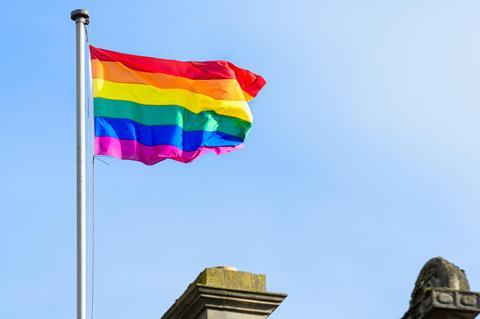As a gay man, Andrew Bunt says that defining a church’s ‘safety’ based on their willingness to affirm a particular sexual ethic is unhelpful and unfair. Jesus modelled a better way, and we should too

Across the country, new university students are looking to get plugged into a church in their new city. And in one city, a report has been produced that is designed to help students do just that. It’s an interesting idea, and a resource that has some merits, but I think it’s also highly problematic.
The report has been produced by the Oxford Safe Church project. It’s stated aim is to “offer LGBTQ+ people the resources to make informed decisions about where they want to go to Church”. That’s an aim I can get behind – I’m a guy who is attracted to guys, and that definitely has an impact on the type of church that I choose to commit to.
The report writers say they want to “give some transparency towards the wide range of beliefs found in Oxford churches”. I think I can get behind that too. As a gay guy, it’s not helpful to me when churches refuse to talk about or be honest about their theological convictions on LGBT matters.
On a report like that created by the Oxford Safe Church project, Jesus would have failed
There seems to be no doubt that the Oxford Safe Church project want what is best for LGBT students who are Christians, or are interested in exploring the Christian faith. I do too. But I’m not convinced this report represents the best way to go about seeking that.
A singular view
The stated aim is to make different churches’ beliefs on LGBT matters transparent. But the authors don’t just highlight the views of different churches, they also claim that some churches, by virtue of their theology, are inherently unsafe for LGBT people. This accounts for a majority of the churches discussed.
The report suggests that only churches that agree with the authors’ theological position – i.e. the full acceptance of LGBT relationships and identity expression – are safe for people like me.
There are several problems with this. It sends the message that disagreement is dangerous, which is an idea that isn’t true and is likely to create harm. It also suggests that people who have a certain set of theological convictions – those shared by a majority of Christians throughout Church history and across the globe today – are moral monsters. That’s not true either, and it’s not fair or helpful to imply that it is.
Safe in Jesus
But much more problematically, it rests on a skewed view of what is means for a church to be safe for LGBT people. The implication of the report is that ‘safety’ is to be affirmed in all our desires, and the choices we make as a result of them. But that’s not the Christian way. In the Gospels, Jesus interacts with all sorts of people. Many of them might have felt apprehensive about engaging with a Jewish teacher, let alone the son of God, but every person who interacted with Jesus was safe with him.
Jesus’s interaction with the Samaritan woman in John 4 is great example. If people in Jesus’s day were creating a report of ‘safe’ Jewish teachers to interact with, presumably this woman would have needed someone who approved of her past and present sexual exploits. Any challenge or implication that she might need to repent would create an unsafe context. On a report like that created by the Oxford Safe Church project, Jesus would have failed.
Jesus starts with the promise of the good news of the true life that he offers (John 4:13-14). He shows that it is safe to be honest about things in both our past and our present, gently revealing what he knows about the woman (John 4:18-20). But he also challenges her sinful behaviour.
A new way
Jesus’s approach includes a challenge that calls us away from the things that are out of step with God’s ways. That is a gracious warning designed to work for our safety. Ultimately, Jesus keeps the focus on himself – the woman goes away not crippled by shame or weighed down by guilt, but talking about who Jesus is (John 4:29). Jesus-shaped safety points us back to Jesus.
A safe church is modelled on the safety of Jesus. It presents us with the gospel in a context where we can be honest. It challenges us to flee sin and to pursue faithfulness in all areas of our life.
The implication is that ‘safety’ is to be affirmed in all our desires
As a gay guy, that’s the kind of church I want to be in, and that’s the kind of church that is safe for me. It is true that churches of all kinds have not treated LGBT people like Jesus treats the woman at the well. Many mistakes have been made. There have been contexts that have not been safe because they have not reflected Jesus’s model of safety.
But it isn’t true, fair or helpful to suggest that holding to a traditional Christian sexual ethic creates this context. It doesn’t have to, and it shouldn’t. Rather than throwing unhelpful accusations around that churches are unsafe, let’s strive to each play our part in helping our Church look more like Jesus.







































No comments yet